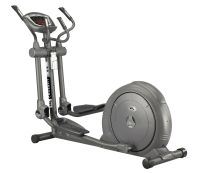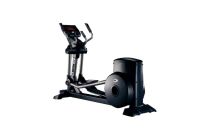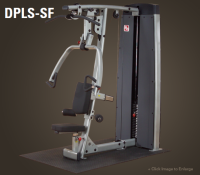The ultimate guide for buying an elliptical trainer
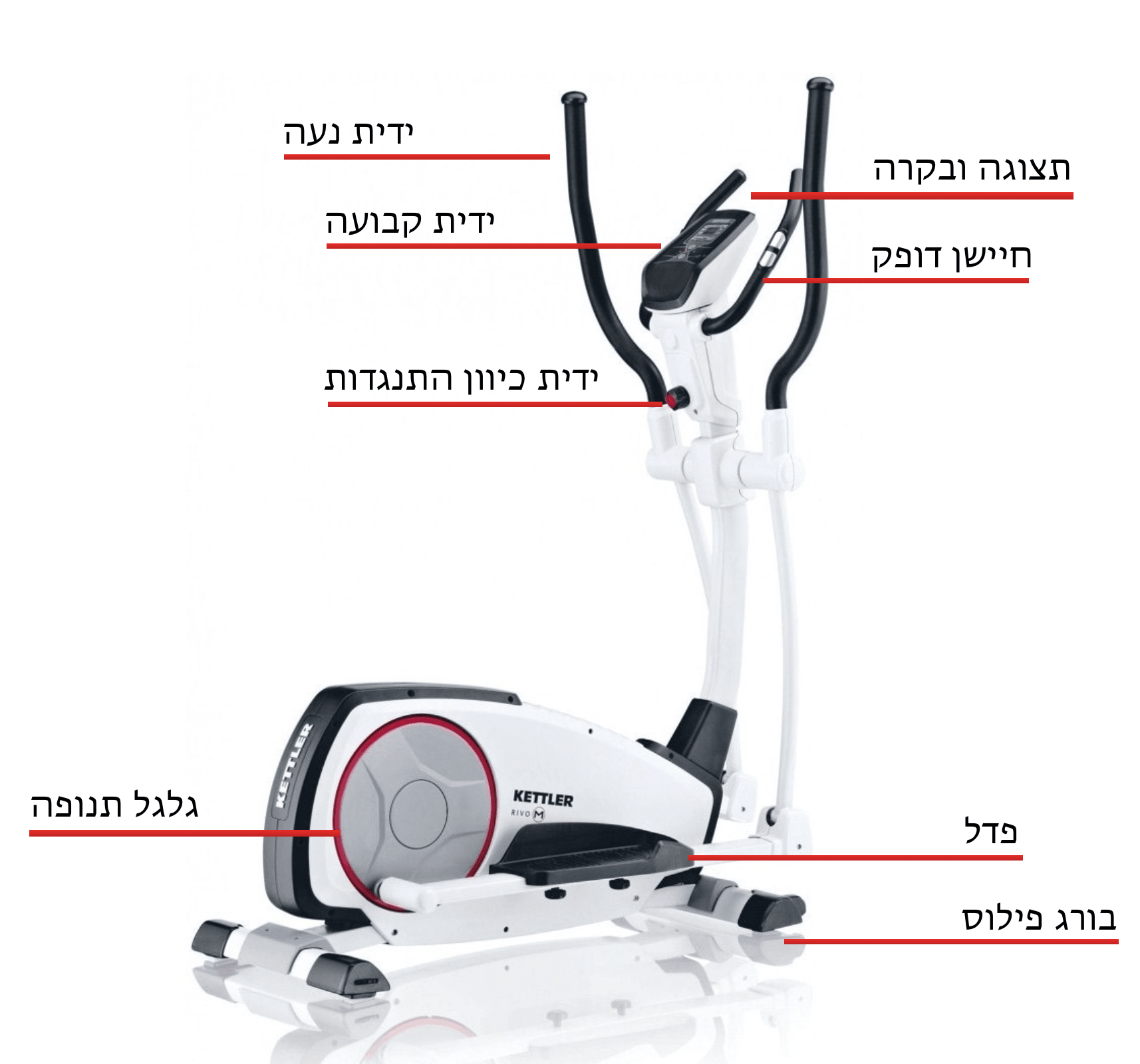
You don’t have to be a scientist to choose a recommended elliptical training machine.
But you definitely need to know how this machine is built and how it works, what are its most important features and what are the advantages for each of these features.
Let’s dive straight in and understand how to choose the perfect elliptical for you.
1. What kind of elliptical is suitable for me?
2. What are the important attributes of an elliptical
3. What are the advantages of an elliptical training machine?
4. What type of muscles it is good for?
5. What do I need to know about the structure of the elliptical?
Choosing an elliptical that’s right for me
First, let’s define what “right” actually means:
How much is it right for my body type?
It’s vital that the elliptical machine allows you to continually use it while achieving your goals (weight loss, fat burning, body toning, improved fitness) and while still optimally keeping your joints – mainly the knees – in a good, healthy condition, even at high intensity and long training sessions.
How much is it right for improving my fitness and training routine?
It’s essential that you choose an elliptical machine that “makes” you feel like you want to use it, whether this is because of mechanical stability, a “sexy” display screen with data to encourage your training, an innovative design or just the appropriate pace length.
How much does it fit my budget?
Ultimately, the price of the elliptical trainer is obviously a big factor in the purchase decision. While keeping in mind all the other important technical aspects of your elliptical, make sure it’s also right for your planned budget.
Important features when choosing an elliptical machine
Choosing the appropriate cross-trainer appliance is key to your success in training and achieving the desired goals from your hard work. We recommend to be focused and examine the following features of the elliptical machine you’re interested in:
- Mechanism Type: mechanical, electrical or magnetic
- Size and weight of the flywheel
- Manufacture
- Service provider – The importer/retailer
- Where you buy from – the amount of years in business, reputation, customer reviews
- Type and period of the warranty
The variety of training machines on offer can certainly be confusing, so it’s a good idea to use this table that lists all the various options in a convenient way:
| Basic Model | Average Model | Advanced Model | Professional Model | |
| Resistance Type | Mechanical | Magnetic / Electrical | Magnetic / Electrical | Electrical |
| User Weight (KG) | Up to 60 | Up to 80 | Up to 120 | Up to 150 |
| Flywheel Weight (KG) | Under 5 | Under 12 | Under 25 | Over 25 |
| Pace Length | Minimal | Average | Large | Very Large |
| User Height (CM) | Up to 170 | Up to 180 | Up to 190 | Any height |
| Price (NIS) | Up to 1,000 | 1,300 - 2,500 | 3,000 - 6,000 | Over 8,000 |
* It’s worth remembering that, in general, an elliptical machine sold for under 1,500 NIS isn’t recommended, unless you are under 65 KG in weight and under 170 CM in height. And also, if you’re, still, out of shape.
Type of resistance
The fitness machines market offers 3 types of elliptical trainers:
- Mechanical elliptical – a type that’s fading away and is hardly ever sold or used.
- Electrical elliptical
- Magnetic elliptical
Electrical resistance elliptical
A few years back, the mechanical elliptical (operated independently by the thrust caused by the user’s legs while training) was very common. But today electrical models are ruling the market and are seen in almost any gym and home, due to it being more convenient and technologically advanced.
The electrical elliptical trainer restarts the display only after the user creates the pedaling movement (setting the dynamo into motion) – just like in the mechanical machines. This makes it electrical and better, but still economical.
In addition, the electrical elliptical comes equipped with various training and fitness programs, for example, up and downhill, alternating speeds and resistance levels.
Some machines allow the user to custom build personal training programs, something not available in manual-mechanical machines.
Magnetic resistance elliptical
In this type of training machine, the user adjusts the resistance level by turning a mechanical lever. This lever is connected to an arm that pushes the magnet closer or further from the flywheel, and thus affecting the level of resistance. The closer/stronger the magnet, the higher the resistance.
Buying a home elliptical or just training in a gym?
What’s the best approach? To train in a professional gym or use my own elliptical at home?
There are some unignorable advantages for training in a gym, these include:
- Avoiding buying a fitness machine.
- The feeling of responsibility and commitment to the gym “forces” some people to actually show up and train, without skipping training sessions too often – thus avoiding paying money for something they don’t use.
- Having guidance and monitoring from a professional fitness instructor.
- Atmosphere in the gym.
What about training at home?
- Unlimited time on the elliptical – an elliptical machine “takes” the most energy out of users, without the feeling of fatigue and exhaustion experienced on treadmills. At the gym, you might need to wait to use the machine and sometimes you’ll be limited to a short training time.
- Be your own master – training at home, you can choose when to train, even at unconventional times.
- Create your favorite atmosphere – with your favorite music, no one to impress, your most comfortable clothes, in front of what you really want to watch.
- No need to drive to the gym – train with no added traffic, stress and time spent on the road.
- Cost – Usually, an elliptical isn’t that expensive. Hence, a one-time purchase saves you additional costs and gym memberships with services you don’t use.
- Training for the entire family – at home, the whole family can train and enjoy your elliptical machine.
- You choose the best machine for YOU – There are a number of elliptical models, including advanced models with heart rate monitoring, electronic/electrical brake, fat percentage meter, rear or front flywheel, etc. Customization is important to efficiently train and maintain a training routine with the optimal convenience and results. So, by buying the perfect elliptical for you, you get exactly the machine that fits your characteristics, needs and preferences.
Whether you choose to train at your home or at the gym, an elliptical training machine maximizes results of improving fitness, cardiovascular endurance, and weight loss, without damage to the joints and tissues.
What advantages should I know before purchasing an elliptical?
Elliptical machines smartly combine the main features and advantages of a fitness bike and a treadmill, into one winning package.
While the elliptical is a good, solid choice for many trainers, you still need to know what you’re looking for, and also understand how this machine differs from a fitness bike and a treadmill.
The positive aspects of the elliptical
Many users report that training on an elliptical can definitely provide a training platform with less impact on the body, compared to a treadmill and even a fitness bike.
Research shows that the elliptical causes less stress and strain on the knees and other joints, while still offering the option for a quality high-intensity interval training, also known as HIIT.
Furthermore, the elliptical offers a major advantage for users with limited space for fitness equipment.
Many of us lack the home space for a full-size fitness bike and/or treadmill. A high quality elliptical can provide the best of both worlds (bike and treadmill), with minimal required space.
A bit on the less positive aspects of an elliptical
For some users, the elliptical learning curve might be a bit longer compared to using instruments such as a fitness bike or a treadmill. Some new users find this a bit frustrating, although the time required to properly use the machine is actually rather short.
When planing to buy an elliptical, consider that a smooth operation cycle is one of the key factors. This is crucial, as it’s only when the elliptical can provide a smooth, unified and quiet operation that it gives you all the health and fitness advantages that these machines are known for.
What muscles does the elliptical work on?
The elliptical is a fitness machine meant to simulate running, without adversely impacting muscles, joints and cartilage. The elliptical movement that the machine creates promotes flexibility in your personal range of motion, while substantially reducing the stress on the ankle and knee.
The elliptical trainer helps improve fitness and burn excess calories, thanks to its ability to push the user to new personal records of cardiovascular endurance, as well as strengthening the following muscles, which are known as key energy “burners” in the body:
- Quadriceps: while using the elliptical, the legs are always somewhat bent, this decreases strain on the joints while also causing controlled stress on this large muscle group that gets stronger, more toned and more efficient at burning energy (calories) during and after a training session.
- Hamstring: The elliptical allows the user to run in a healthy and impact-free manner and also activate all the leg muscles simultaneously, including the hamstring. This is one of the body’s largest muscles and developing and strengthening it contributes to increased calorie burning and a more toned appearance of the leg.
- Groin muscles: both professional and amateur athletes tend to get injured in the groin muscle, which makes them unable to train for long periods of time. Using an elliptical strengthens these groin muscles, in a proper and injury preventing manner.
- Gluteus (glutes): this large muscle group gets a massive training on an elliptical machine, one that increases as the resistance is higher. The glutes can get stronger and more toned quite fast, so those sticking to their elliptical training routine, boast a toned and firm buttock.
- Strengthening the arms, chest and shoulder muscles: Thanks to the two push handles on the sides of the elliptical, these upper body muscles also get trained, strengthened and toned.
- Abdominal muscles: Because the elliptical promotes a correct running posture, the abs are also a part of the training and they get toned and stronger.
What’s important to know about the elliptical structure before purchase?
First, it’s important to know the main parts of the elliptical cross-trainer.
This fitness machine includes both moving and static parts. Of course, some features may differ between models.
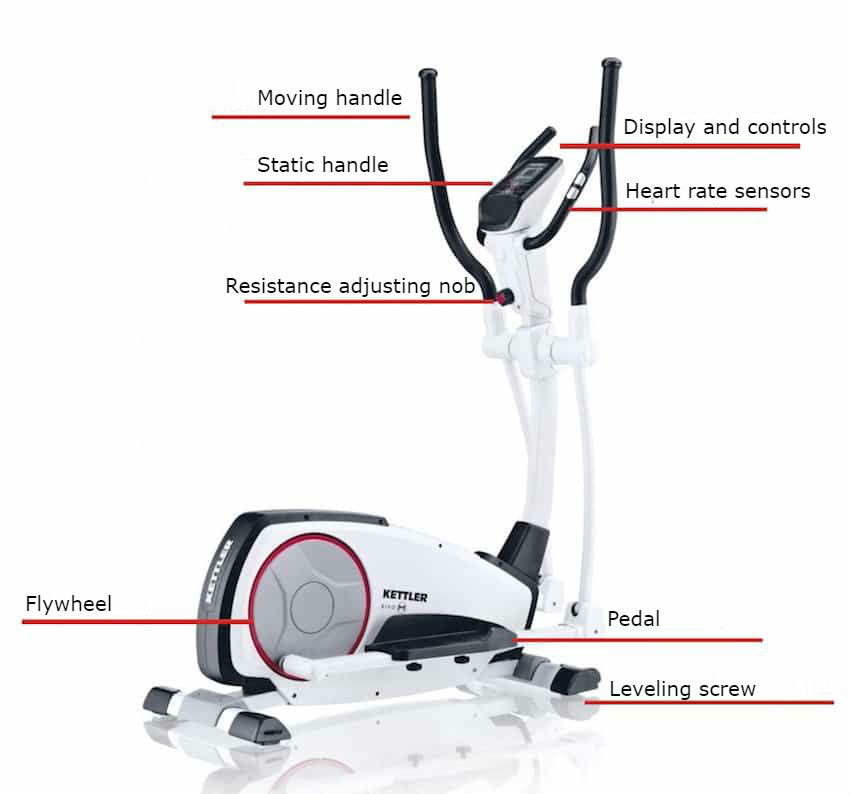
Important functions to know when choosing your elliptical
Here are some typical elliptical functions you should know. The availability of specific functions differs between models, so check before you choose and buy.
Based on the elliptical model of choice, these are common functions on the display and control console:
- Number of training programs
- Distance in KM
- Training time
- Time for training end
- Heart rate
- Average heart rate
- Average speed
- Current speed
- Visual training progression graph (ascents, descents, speed, distance)
- Calories burned
Furthermore, in some models, you can perform these following operations through the control panel:
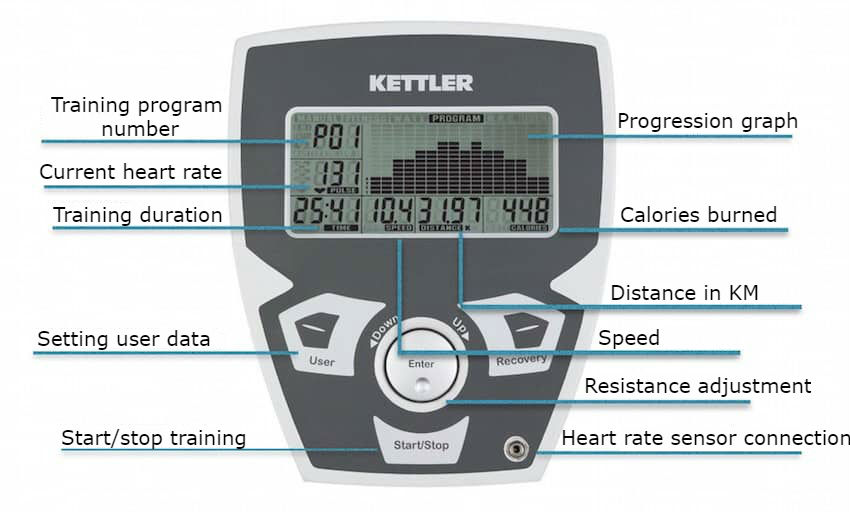
- Resistance change
- Choosing a training program
- Training duration
- Data for calorie calculations – gender, age, height, weight
- Start / pause / stop training
- Connecting a smartphone or media player
- Connecting a wireless or connected heart rate monitor.
To summarize, choosing an elliptical machine is no simple task.
But when you have the tools and knowledge, and when you buy from a reputable and professional retailer, it’s much easier and safer than it may initially appear.

